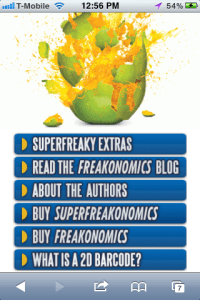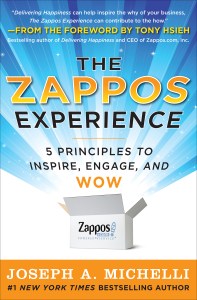You’ve heard the story before: The Internet forced many offline industries to adapt to new distribution media, find new business models amidst the rubble of old models, and accept the fact that people’s very behavior (and methods of consumption) were changing drastically. Do that or face the consequences. Some sadly thought it was just a fad. The Web has wreaked havoc on some of these industries more so than others, one of those notable victims being the publishing industry.
Over the last few years, publishing companies have been forced to accomodate eReaders, tablets, social media, and a bevy of new multimedia channels. Perhaps more than others, they’ve been slow to evolve and they’ve struggled, because, as they say, Rome wasn’t built in a day. (Even though it seems that apps can be.)
Link.me, an Australian startup with headquarters in San Francisco, has been hard at work trying to find creative and cost-effective ways for publishers to retain their print businesses while incorporating the new digital technologies that many readers have come to expect. To do so, Link.me started with QR codes — those pervading black-and-white pixellated squares that have come to represent bar codes 2.0. Publishers have incorporated QR codes onto book jackets for several years now, but due to (their seemingly institutional) hesitation, they’ve been slow to integrate those codes into the actual text of their books, magazines, and so on.
To better connect publishers with their audience (and give them a shot at acquiring new readers), Link.me has been forging partnerships with the top book publishers to launch trials, deals, promotions, and more through QR codes. The startup’s current client roster includes HarperCollins, Hachette Book Group, Penguin, Macmillan, McGraw-Hill and Random House.
 In October, Link.me signed with its newest client, McGraw-Hill, and as an example of the kind of work they’re doing, one of the publishing company’s recent publications, “The Zappos Experience”, (written by Joseph Michelli) embedded QR codes in over 15 individual chapters. The goal was, of course, to bring The Zappos Experience “to life”, says Link.me Founder and CEO Antony McGregor Dey, and to allow readers to scan those codes with their smartphones to directly access multimedia content. For example, a scanned code might open a Facebook page devoted to Zappos’ philosophy on “Delivering Happiness” or open video clips that offer a glimpse inside the Zappos conference room, and so on.
In October, Link.me signed with its newest client, McGraw-Hill, and as an example of the kind of work they’re doing, one of the publishing company’s recent publications, “The Zappos Experience”, (written by Joseph Michelli) embedded QR codes in over 15 individual chapters. The goal was, of course, to bring The Zappos Experience “to life”, says Link.me Founder and CEO Antony McGregor Dey, and to allow readers to scan those codes with their smartphones to directly access multimedia content. For example, a scanned code might open a Facebook page devoted to Zappos’ philosophy on “Delivering Happiness” or open video clips that offer a glimpse inside the Zappos conference room, and so on.
Basically, these QR codes allow publishers to begin offering in their books the same extra features that music labels have added to albums over the decades — or that the film industry adds to its DVDs. And with the growing rate of smartphone adoption and the ease of scanning, this kind of bonus content can stay digital and remain easy-to-use.
Link.me uses its mobile tags (along with mobile content) to try to get readers to register directly with the brand. The publishers, then, can gain direct access to their readers and attempt to build and maintain relationships with those readers through interactive content. Link.me essentially wants to give publishers the ability to build out direct marketing databases, propelled by the data gained from readers signing up for various extras and deals through their QR codes.
As publishers aggregate data on customer interests, they can then target their marketing to readers based on their individual interests. And that’s how Link.me is making money; the startup charges publishers for access to their database, while usage remains free to readers.
Through how-to videos on a kitchen appliance, for example, warranty registration, discounts towards future purchases, interviews with an author, free music tracks, Link.me wants to take any special content that a brand may have to offer and turn that into interactive content embedded into the product. McGregor Dey says that he sees Link.me’s service becoming a replacement for the old cardboard warranty registration cards you used get, but updated for the digital age, coupled with the goal of building direct marketing channels and retaining customers.
 And it’s not only QR codes, Link.me also offers these extra features by way of SMS and email. Through these tools, the startup has been building some good traction for their publishing clients. McGregor Dey said that response rates among readers have been as high as 20 percent of total books sales. In other words, if a book sells 300,000 copies, 60,000 of those readers are scanning QR codes or clicking through SMS.
And it’s not only QR codes, Link.me also offers these extra features by way of SMS and email. Through these tools, the startup has been building some good traction for their publishing clients. McGregor Dey said that response rates among readers have been as high as 20 percent of total books sales. In other words, if a book sells 300,000 copies, 60,000 of those readers are scanning QR codes or clicking through SMS.
McGregor Dey said that even their lowest campaigns (in terms of response rate) have been above 4 percent. Compared to other comparable marketing channels, like banner ads, which can average 0.2 percent click through rates and Facebook links which are even lower, Link.me’s solution can have real value.
Link.me, in several incarnations, has been around since 2008 (it was previously known as QMCodes) and has been operating in private beta for most of that time. Since its inception, the startup mostly focused on publishers, and that’s where most of its current marketing efforts are today — as that’s where it’s found market penetration. But the Link.me CEO said that he sees opportunities for Link.me’s model beyond publishing, especially in retail, whether it be for fashion, sporting goods, or kitchen appliances.
McGregor Dey said that he and his team have made the Link.me platform adaptable, so that as adoption of NFC and image recognition become mainstream, they will be integrated as well.
Link.me was initially angel funded by Andrew Barlow, the co-founder of online analytics company Hitwise and has also received some investment from the Australian government. The company is currently raising its series A.
For more on Link.me, check ’em out at home here.
